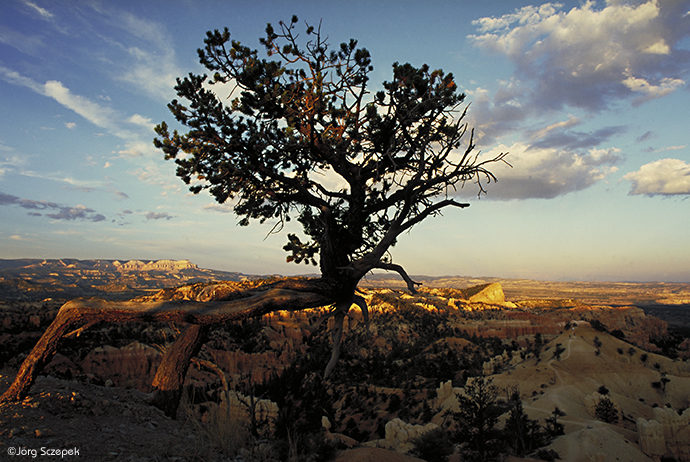Photogalerie „Die Ästhetik im Chaos“
|
|

Fairyland Point, Bryce Canyon NP/Utah 5 / 13
|
|
Warum erscheint uns die Silhouette eines vom Sturm gebeugten Baumes vor dem abendlichen Winterhimmel als schön, aber der korrespondierende Umriss eines Mehrzweckgebäudes nicht, obwohl sich der Architekt alle Mühe gegeben hat? Die Antwort scheint mir, wenngleich dies ein wenig spekulativ ist, aus den Erkenntnissen der dynamischen Systeme zu folgen. Unser Gefühl für Schönheit ist inspiriert durch das harmonische Arrangement von Ordnung und Unordnung, wie sie in natürlichen Objekten vorkommt – in Wolken, Bäumen, Bergzügen oder Schneekristallen. All diese Formen sind in physische Formen gegossene dynamische Prozesse und spezielle Kombinationen von Ordnung und Unordnung sind typisch für sie.
Gert Eilenberger (4)
(4) James Gleick, Chaos: Making a New Science, S. 117
Why is it that the silhouette of a storm-bent leafless tree against an evening sky in winter is perceived as beautiful, but the corresponding silhouette of any multi-purpose university building is not, in spite of all the efforts of the architect? The answer seems to me, even if somewhat speculative, to follow from the insights into dynamical systems. Our feeling for beauty is inspired by the harmonious arrangement of order and disorder as it occurs in natural objects – in clouds, trees, mountains ranges or snow crystals. The shapes of all theese are dynamical processes jelled into physical forms, and particular combinations of order and disorder are typical for them.
